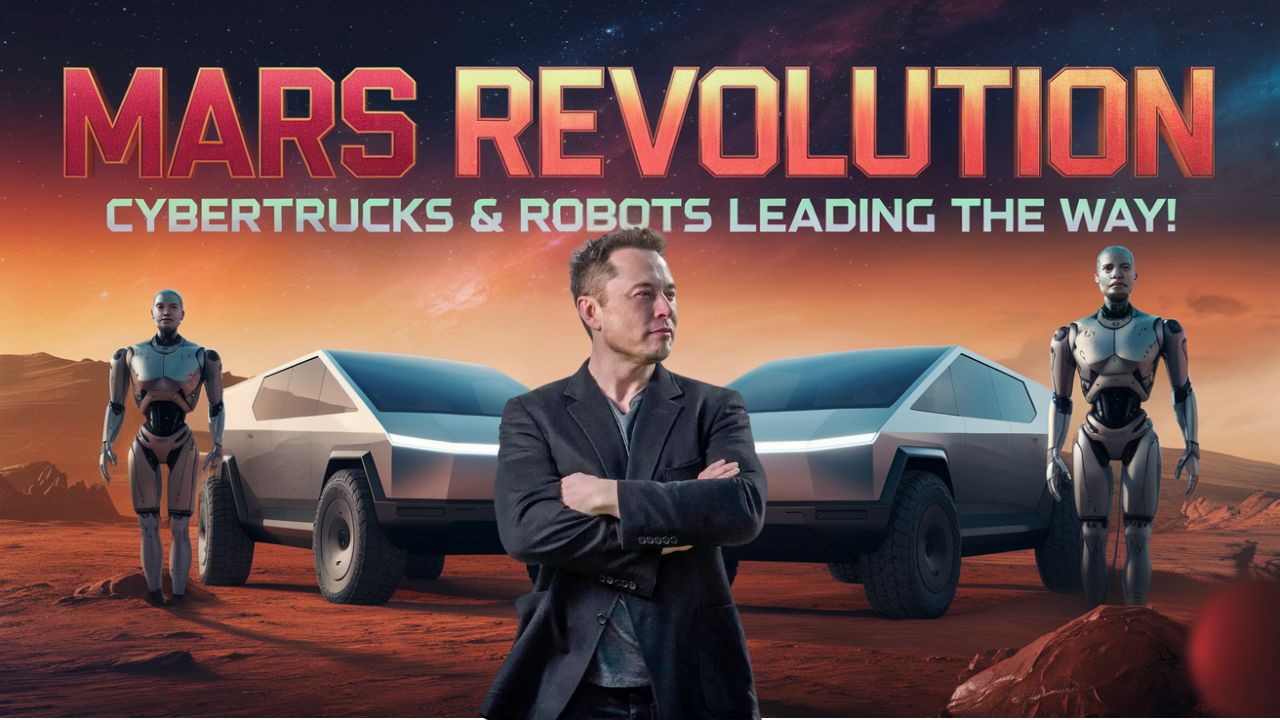Microsoft St. Peter’s Basilica: The Vatican has recently taken a bold step in modernizing the experience of visiting St. Peter’s Basilica, unveiling a groundbreaking partnership with Microsoft to introduce AI technology to one of the world’s most iconic religious sites. This initiative is set to reshape the way pilgrims and visitors interact with the historic basilica, aligning spiritual tradition with cutting-edge technology. This article delves into the key aspects of this AI transformation and how it promises to make the Jubilee Year of 2025 a memorable and immersive experience for all.
- Is Your Job Safe? How AI Could Change Australia’s Workforce Forever!
- From Wicketkeeper to Captain: Josh Inglis’s Inspiring Rise , Josh Inglis captaincy?
- Google Vids AI: The Secret Behind Google’s Game-Changing Video Tool?
- Apple AI Revolution: Next-Gen Features to Ignite Unprecedented Demand
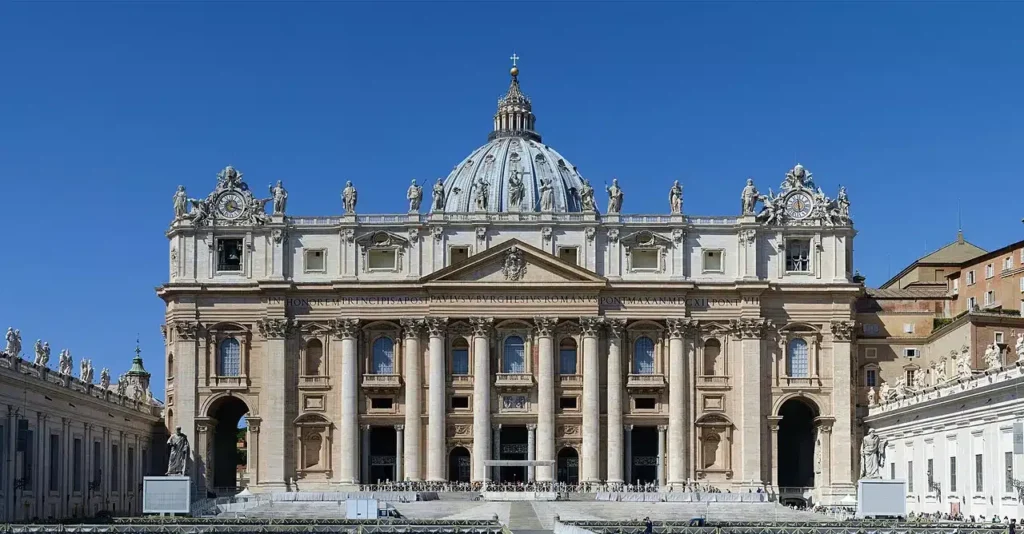
The Vatican’s Vision: Merging Faith and Technology
The Vatican’s decision to integrate AI services into St. Peter’s Basilica signifies a progressive approach to preserving history and enhancing the visitor experience. As the 2025 Jubilee Year approaches, an anticipated influx of pilgrims will flood Vatican City. This AI collaboration aims to manage visitor flow effectively and offer unique insights into the basilica’s history, architecture, and cultural significance. Pope Francis has long advocated for ethical use of AI, emphasizing that technology should serve humanity’s spiritual needs. Through this initiative, the Vatican exemplifies this vision by creating a digital environment that resonates with both faith and innovation.
A Digital Twin of St. Peter’s Basilica: How AI Is Bringing the Vatican to Life
One of the most impressive features of this collaboration is the creation of a digital twin of St. Peter’s Basilica. Using over 400,000 high-resolution images captured with drones, cameras, and lasers, Microsoft’s AI has constructed a virtual replica that allows global visitors to explore the basilica digitally. This technology provides an in-depth, immersive experience, enabling users to view intricate architectural details, famous artworks, and historical artifacts from any corner of the world. This digital transformation not only allows visitors to engage with the basilica’s rich history but also serves as a valuable educational tool for scholars and students alike.
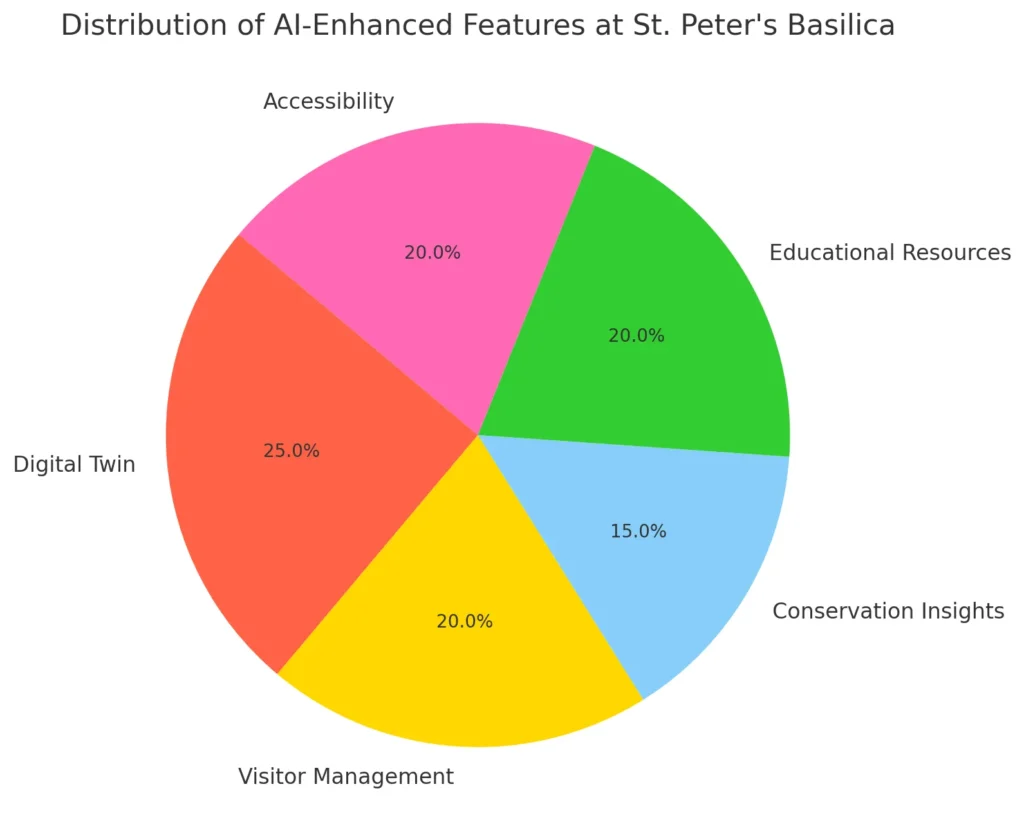
Key Features of the AI-Enhanced Basilica
| Feature | Description |
| Virtual Exploration | Allows visitors to experience St. Peter’s Basilica digitally, viewing details captured through high-resolution imaging. |
| Visitor Management | AI-driven reservation system helping manage crowds and scheduling visitor entry during high-demand periods like the Jubilee Year. |
| Conservation Insights | AI-powered analysis identifying structural issues, such as cracks or missing pieces, to prioritize and inform maintenance efforts. |
| Educational Resources | Virtual tours include informational segments on art, history, and architecture, making the basilica a global resource. |
| Accessibility | Ensures that individuals unable to visit in person can still experience the basilica’s beauty and significance through an immersive platform. |
| Real-time Analytics | Provides insights on visitor behavior, helping the Vatican improve visitor flow and enhance the experience. |
| Ethical Technology Use | Aligns with Pope Francis’s vision of AI that respects human values and traditions. |
| Sustainability | Aims to reduce the environmental impact by managing crowds effectively and ensuring preservation. |
| Digital Pilgrimage | Enables a spiritual journey for those who may not be able to visit in person due to distance or physical limitations. |
| Enhanced User Engagement | Adds interactive elements, such as virtual guides and Q&A sessions, making the tour personalized. |
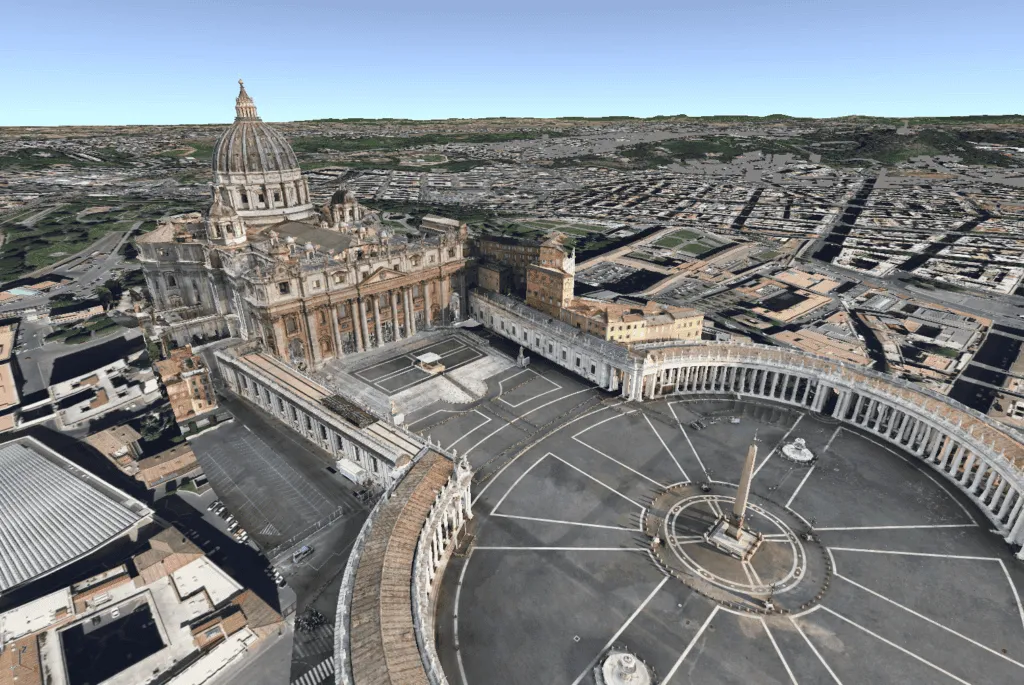
Visitor Management Through AI: Revolutionizing Pilgrim Flow
Microsoft St. Peter’s Basilica With millions of pilgrims expected to visit during the Jubilee Year, managing visitor flow is essential. The Vatican has introduced an AI-driven reservation system, enabling visitors to book entry times in advance, reducing overcrowding and long waits. This system not only improves the visitor experience but also enhances safety and sustainability by controlling the number of people inside the basilica at any given time. The AI algorithms will assess visitor behavior, identify peak times, and adjust entry slots accordingly, making the experience more organized and enjoyable for everyone.
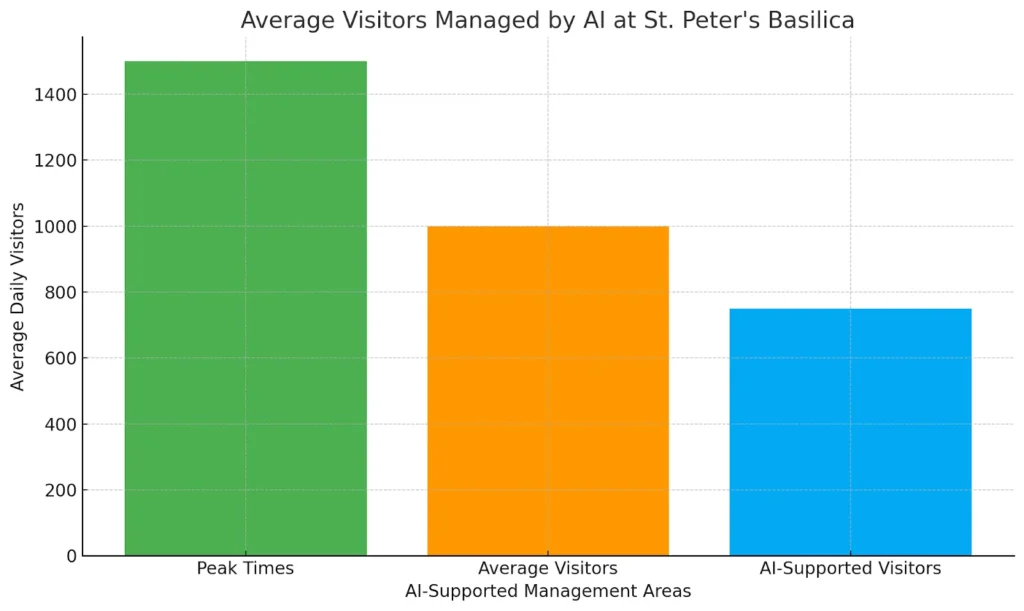
AI-Powered Conservation: Preserving St. Peter’s Basilica for Future Generations
AI’s role extends beyond visitor management to the preservation of the basilica itself. By analyzing high-resolution images, AI can detect cracks, erosion, and other structural issues that are invisible to the naked eye. This allows maintenance teams to prioritize repairs, ensuring that the basilica remains in pristine condition for future generations. The AI-powered conservation efforts highlight the Vatican’s commitment to preserving this historic monument while respecting its cultural significance. These advancements also offer transparency, as visitors can gain insights into the ongoing conservation work and understand the importance of maintaining such heritage sites.
The Ethical Dimension of AI in Religious Spaces
Pope Francis has consistently advocated for AI technology that embodies human values, compassion, and ethical standards. By integrating AI into St. Peter’s Basilica, the Vatican exemplifies the ethical application of technology in a religious setting. Microsoft’s AI solutions were developed with these principles in mind, ensuring that the platform respects the basilica’s sanctity and aligns with the Vatican’s spiritual mission. The Vatican has set a precedent by demonstrating that technology, when used responsibly, can be an asset in supporting religious and cultural preservation.
Key Dates and Events for the 2025 Jubilee Year at St. Peter’s Basilica
| Date | Event | Link for More Information |
| January 1, 2025 | Opening of the Jubilee Year | Official Vatican Website |
| March 25, 2025 | Feast of the Annunciation | Event Details |
| June 29, 2025 | St. Peter and Paul Feast Day | Event Schedule |
| August 15, 2025 | Assumption of Mary | More Info |
| September 8, 2025 | Nativity of the Blessed Virgin Mary | Schedule |
| November 1, 2025 | All Saints Day | Details |
| December 25, 2025 | Christmas Day | Events |
| December 31, 2025 | Closing of the Jubilee Year | Official Closing |
| Special Events | Guided virtual tours throughout the year | Virtual Tours |
| Continuous | AI-driven virtual experiences available year-round | Digital Tour |
Virtual Pilgrimage: Experiencing St. Peter’s from Anywhere
For those unable to visit the basilica in person, the AI-generated digital twin offers a new way to experience the site’s splendor from afar. This virtual pilgrimage allows individuals to connect with the basilica’s spiritual ambiance, even from thousands of miles away. Visitors can navigate through the basilica’s interior, interact with AI-powered virtual guides, and access multimedia resources to deepen their understanding. This feature is especially valuable for those with physical limitations, enabling them to embark on a digital journey that resonates with the essence of a traditional pilgrimage.
Interactive Features and User Engagement
To make the experience more immersive, the Vatican has integrated interactive elements within the virtual tour. Visitors can ask questions, receive real-time responses, and engage with informational segments about St. Peter’s history, artwork, and cultural impact. This AI-driven engagement transforms the visit into an educational journey, allowing users to explore specific details or historical events that interest them. Such features enhance user satisfaction and foster a deeper connection to the basilica’s spiritual and cultural heritage.
Conclusion
The Vatican’s partnership with Microsoft represents a milestone in the fusion of faith and technology. By leveraging AI to enhance visitor experience and preserve heritage, the Vatican has set a powerful example of using technology to uphold human values. As we approach the 2025 Jubilee Year, this initiative promises to make St. Peter’s Basilica more accessible, engaging, and spiritually fulfilling than ever before.
- 🤯 Leaked! OpenAI Project Strawberry: Is This the Beginning of the End?
- GPT 5 Release Date, Apple-Meta AI, & Robot Dogs: The Future of AI
- M4 iPad Pro vs. M3 MacBook Air: Which Is Right for You?
- Access GPT-4 Voice & Vision EARLY: Microsoft Co-pilot AI Revolutionizes Windows with GPT-4
FAQ Related To Microsoft St. Peter’s Basilica
What is the purpose of the Vatican’s AI-driven digital twin of St. Peter’s Basilica?
The digital twin offers a virtual representation of the basilica, allowing visitors worldwide to explore its art and architecture. It enhances accessibility and provides an immersive educational experience.
How does the AI reservation system help manage visitor flow during the Jubilee Year?
The AI reservation system enables visitors to book entry times, reducing overcrowding and ensuring a smoother, safer visit for everyone, especially during high-demand periods like the Jubilee.
What ethical considerations did the Vatican make in implementing AI in St. Peter’s Basilica?
Pope Francis emphasized that AI should embody human values. Microsoft’s AI solutions were developed with these principles, ensuring respectful, ethical use in the basilica while supporting cultural preservation.






